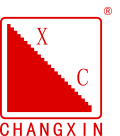Heating furnaces are used in petroleum, chemical, metallurgy, machinery, building materials and other industries. The seven commonly used refractory castables for heating furnaces are: low cement, alumina cement, phosphate, mullite, lightweight, anti-dry slag, self-leveling castables. Other refractory materials include refractory fibers, plastics, etc.
(1) Low cement castable
It is suitable for high temperature and medium temperature zones of heating furnaces, and its use temperature is between 1400~1500℃. Low cement castable is a kind of castable produced by using micro powder as binder, aluminate cement as coagulant, and adding some coal prevention agent and water reducing agent. Its main features are: moderate solidification speed, good thermal shock resistance, high load softening temperature, strong slag resistance, high refractoriness, etc.
(2) Self-leveling castable
It is suitable for the parts of heating furnace with complex structure that cannot be vibrated manually. The maximum operating temperature is 1500℃. It has the characteristics of good thermal shock resistance, high refractoriness, simple construction and almost no need for vibration.
(3) Phosphate castable
It is suitable for the bottom of the heating furnace and other parts that are severely affected by material friction and hot air scouring. The use temperature is between 1000~1600℃. It is a castable with phosphoric acid or phosphate as a binder, alumina-calcium cement and magnesia as a coagulant. It is characterized by high refractoriness, good thermal shock resistance, high compressive strength, strong erosion and impact resistance, and good wear resistance (if a small amount of steel fiber is added, it is better).
(4) Mullite castable
Due to its high thermal shock resistance, good scouring resistance, good erosion resistance, good volume stability and high operating temperature, it is generally used in key parts such as the furnace wall, furnace roof and pressure beam of the heating furnace, or used to prefabricate burner bricks.
(5) Anti-dry slag castable
It is suitable for the bottom of the heating furnace and the parts where iron oxide slag is deposited. The maximum operating temperature can reach 1600℃. Its main features are: high refractoriness, good thermal shock resistance, and good resistance to the erosion of iron oxide slag in the heating furnace.
(6) Lightweight castable
It is suitable for thermal insulation layers of furnace walls, furnace roofs, flues, etc. High-strength lightweight castables can also be used as working linings for exhaust systems and hot air ducts. It is characterized by low bulk density, low reburning linear change rate (good thermal stability), low thermal conductivity, and a certain refractoriness. It combines the advantages of refractory materials and thermal insulation materials.
(7) Refractory fiber materials
Refractory fiber materials (felt, board, brick, block and blanket, etc.) have been widely promoted and used in various furnaces since they were applied in my country in the early 1980s. In recent years, refractory fiber spray coatings and refractory fiber castables have also been widely used. This is mainly because when refractory fiber is used as furnace wall material, the furnace wall is light, the furnace body temperature rises and falls quickly, and the thermal stability is good. When used as a furnace insulation layer, it has good sealing performance and significant energy-saving effect. When refractory fiber spray coating (or refractory fiber castable) is used as furnace lining, mechanized construction can be used to shorten the construction period.
- 1) Refractory fiber bricks. Refractory fiber bricks can be used as thermal insulation linings for furnaces. They are characterized by low thermal conductivity, low heat capacity, high strength, and good thermal shock resistance.
- 2) Refractory fiber board. Refractory fiber board has superior mechanical and structural strength, low thermal conductivity, low shrinkage, resistance to airflow scouring, and a flat board surface, which is convenient for construction.
- 3) Refractory fiber cotton (blanket). Refractory fiber cotton (blanket) has low thermal conductivity, low heat storage and good thermal insulation performance; good thermal shock resistance, erosion resistance and crystallization resistance; good sound insulation performance and mechanical strength, good fiber elasticity, small high temperature shrinkage, and easy processing and installation.
(8)Refractory plastic
In the past ten years, in the newly built large-scale heating furnaces in my country, plastics have been widely used in the furnace lining to replace traditional refractory brick linings and refractory castables. Its advantages are: no gaps in the overall ramming, strong integrity, good airtightness, less heat loss, energy saving; high high temperature strength, good thermal shock resistance, strong spalling resistance, good mechanical vibration resistance, can extend the life of the furnace and reduce production costs. Plastics can be used for the top and wall working surface of the heating furnace.
Some shaped refractory products (such as high alumina bricks, clay bricks and magnesia bricks, etc.) and some shaped insulating refractory products (such as clay insulating refractory bricks, high alumina insulating refractory bricks and diatomaceous earth insulating refractory bricks, etc.) are also used on the heating furnace lining. These refractory materials can be produced, inspected and used in accordance with national refractory material standards.
It is suitable for high temperature and medium temperature zones of heating furnaces, and its use temperature is between 1400~1500℃. Low cement castable is a kind of castable produced by using micro powder as binder, aluminate cement as coagulant, and adding some coal prevention agent and water reducing agent. Its main features are: moderate solidification speed, good thermal shock resistance, high load softening temperature, strong slag resistance, high refractoriness, etc.
